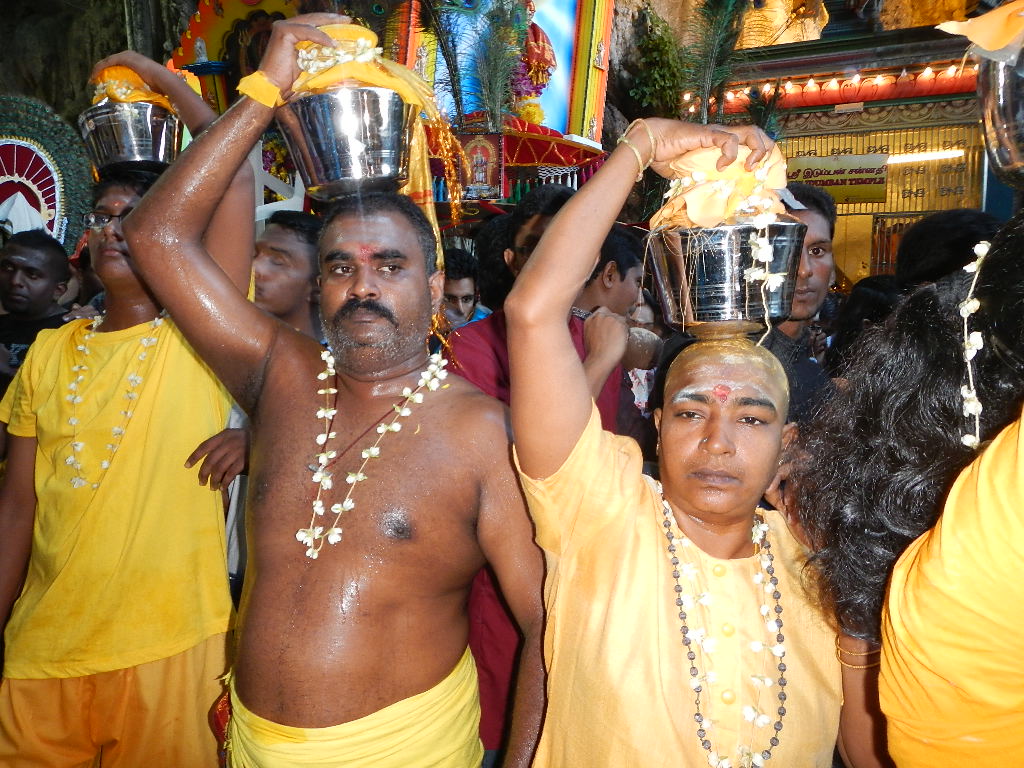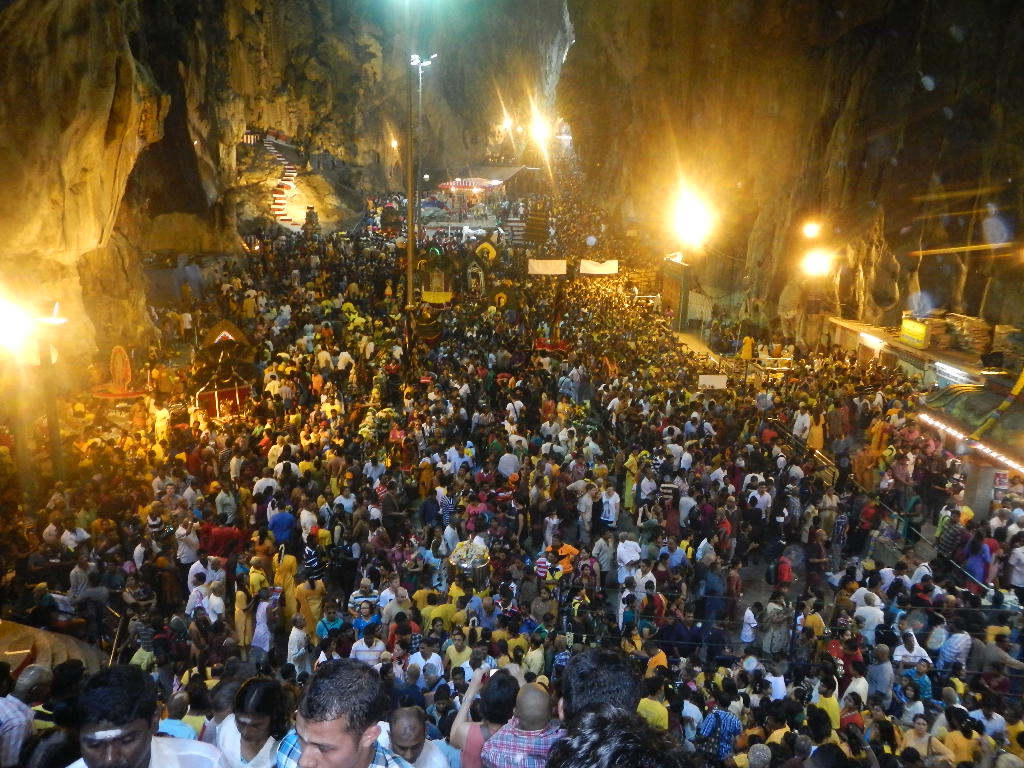The minute I step out of my hostel, I’m engulfed in a tightly packed crowd lining the sidewalk. I push my way through, passing parents hoisting their kids up on their shoulders and volunteers passing out food. Bewildered, I crane my neck to peer through the crowd and see the procession passing. Flashes of multi colored saris, metallic shrines and bundles of flowers make up the parade. A loud splitting crack sets off thunderous cheers and I look up to see fireworks illuminating the night sky. It was midnight and the celebrations of the Thaipusam Festival had begun as the devotees begin their pilgrimage on foot to the Batu Caves, eight miles north of Kuala Lumpur.
Thaipusam Fesitval is a Hindu celebration that is held each year during the full moon in the tenth month of the Hindu calendar. Primarily held in the Tamil-speaking communities, the festival in Kuala Lumpur is one of the largest ones outside of India, with over 1.5 million attendees. I wake at dawn the next morning and catch a train to the caves to witness the arrival of the pilgrims. As the train pulls into the station, a gate blocks hundreds of people waiting the arrival of their friends and relatives. Many hold baskets of food and water with bright jewels on their foreheads keeping an eye on their children who run around with their faces covered in paint. I weave through the crowd finding the base of the mountain where a carnival has been set up, featuring loud music and stalls selling everything from saris to fruit juice to souvenirs. Arriving at the path entrance, I stop and peer up at the steep, 280 steps leading up to the caves. Watching over the thick crowd is a golden statue, measuring 47 yards in height, of the god Subramaniam. The festival is dedicated to this god and marks a day of penance and thanksgiving.
As a form of penance or sacrifice, many carry “kavadis” which literally mean “burden”. These burdens range from jugs, coconuts, oranges and even floats. The objects are attached to the bare backs of the devotees through metal hooks and piercings. Others carry floats above their heads and the stilts dig into their sides. Some have hooks with strings attached that pull on the skin on their back. Women carry jugs on their heads or pierce their mouths shuts with a spear going through each cheek and out the other side. They sacrifice their bodies to piercings and metal hooks, carrying these burdens on the eight-mile journey from Kuala Lumpur to the base of the mountain, then up the 280 stairs to the caves. In return, they are hoping for favors from their gods. Both men and women ascend the mountain, carrying these burdens, in the scorching heat, chanting prayers as they go.
On my way up I pass people of all ages who have stepped to the side to take a break. The humidity paired with the steep stairs make the climb treacherous. I finally reach the mouth of the caves that opens up into a large entrance hall. As I press through the crowd I pass shaman-type healers who are performing a ritual of removing the spears and piercings from the body of the sacrificees. They are chanting and pouring white powder as they slap their backs after each removal. Not a drop of blood is spilt during the festival.
In the back is a temple with several alters where pilgrims of all ages stop to pray. The caves are packed to the brim with the devotees, pilgrims, friends and families, which would be a fire hazard in any other country. However, no one worries about that. In fact, this day perfectly shows how Malaysia has held on to its history and culture while stepping into the modern world. It’s this thousand of years old ancient Hindu ritual that takes place in a cave, on a mountain overlooking the skyscrapers of Kuala Lumpur’s financial district. And it’s this very fusion of cultures and ethnicities; religions and rituals, antiquity and modernity that best represent Malaysia.
~ By Teresa Murphy of Tess Travels. Murphy visited the Thaipsum Festival, a Hindu ritual that takes place every year in the Batu Caves outside of Kuala Lumpur.



